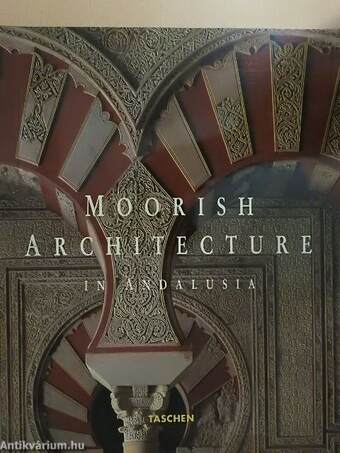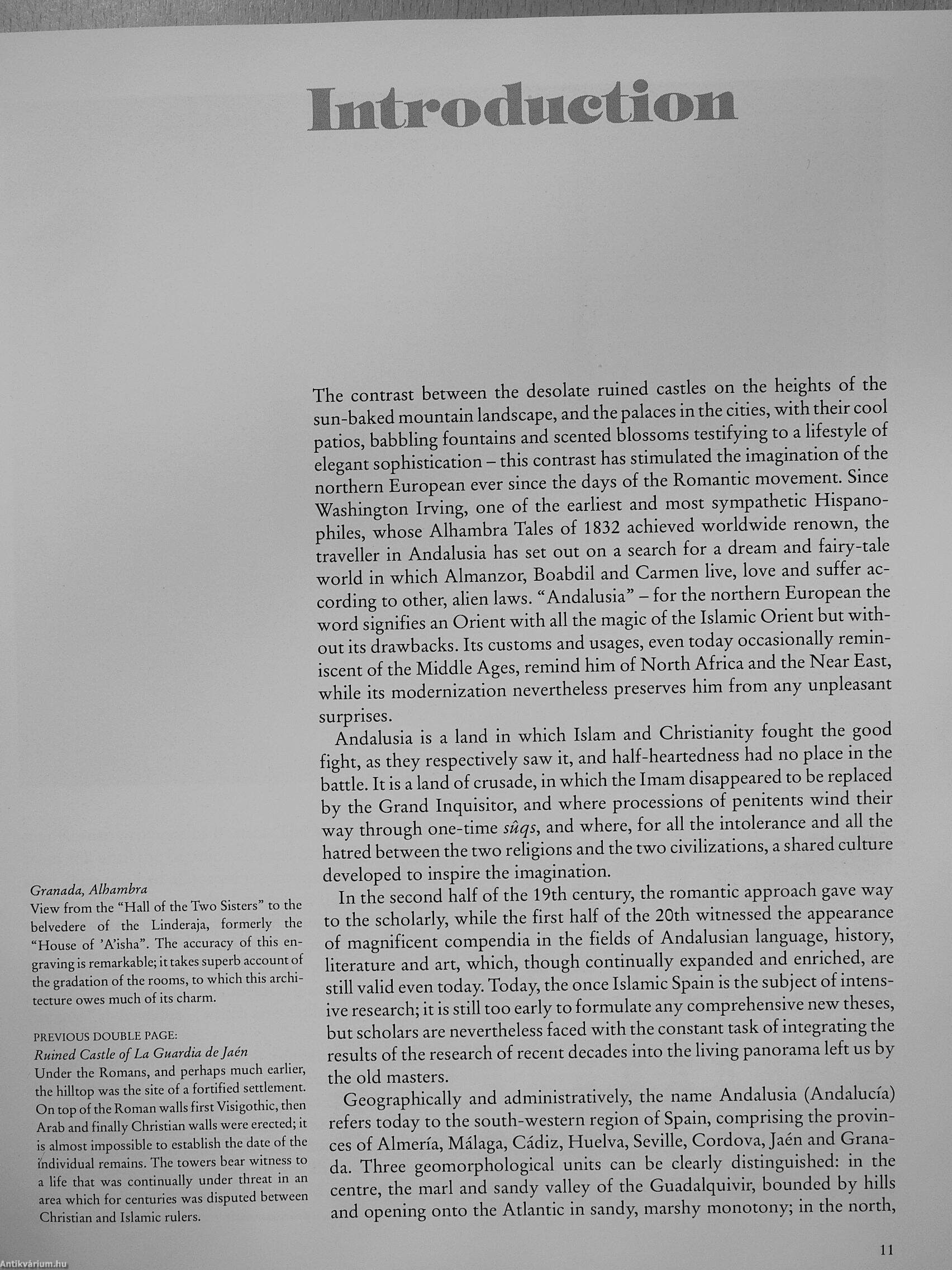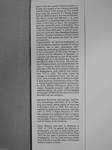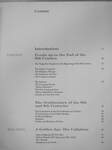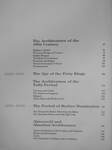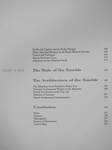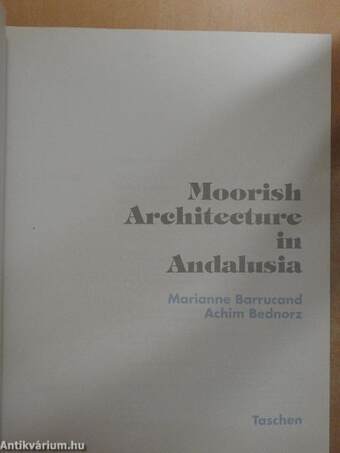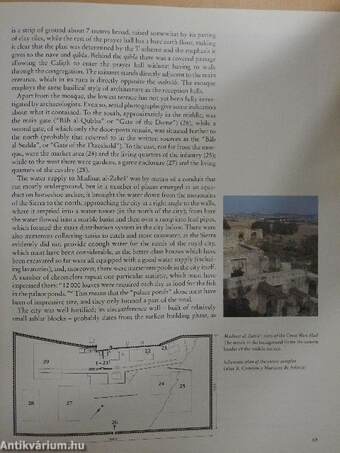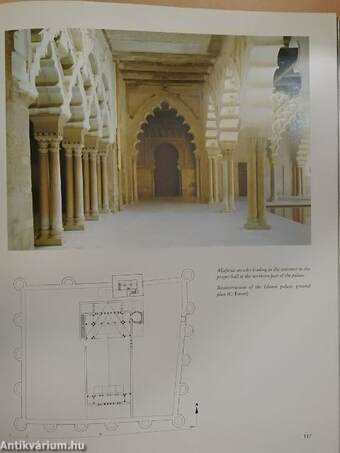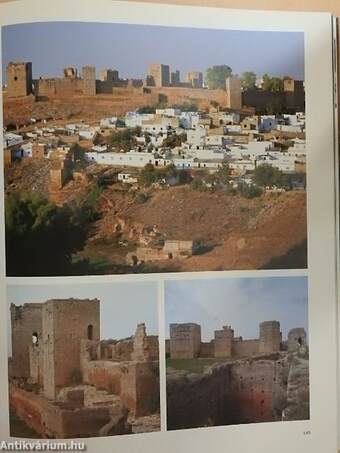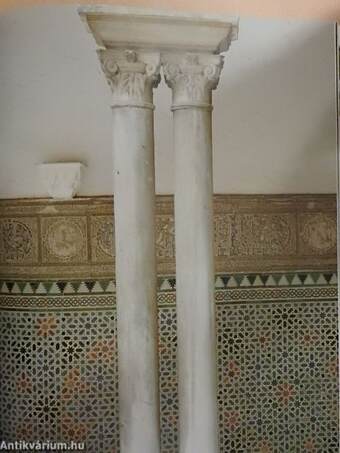1.068.098
kiadvánnyal nyújtjuk Magyarország legnagyobb antikvár könyv-kínálatát

VISSZA
A TETEJÉRE
JAVASLATOKÉszre-
vételek
Moorish Architecture in Andalusia
| Kiadó: | Benedikt Taschen Verlag GmbH |
|---|---|
| Kiadás helye: | Köln |
| Kiadás éve: | |
| Kötés típusa: | Varrott papírkötés |
| Oldalszám: | 237 oldal |
| Sorozatcím: | |
| Kötetszám: | |
| Nyelv: | Angol |
| Méret: | 30 cm x 24 cm |
| ISBN: | 3-8228-9632-2 |
| Megjegyzés: | Színes fotókkal, fekete-fehér illusztrációkkal. |
naponta értesítjük a beérkező friss
kiadványokról
naponta értesítjük a beérkező friss
kiadványokról
Előszó
TovábbFülszöveg
Spain owes her special historical position in Europe very largely to her intensive encounter with the Orient. In the summer of 710, a small force under the command of a Berber named Tarif Ibn Mâlik landed to the west of Gibraltar. The Islamic armies that followed in Its wake succeeded in conquering large areas of Spain within a short span of years. The conquerors gave the country the name of al-Andalus. Thus began a period of cultural permeation that was to last for almost 800 years. In spite of intolerance and animosity, there developed between Muslims, Christians and Jews a shared cultural environment that proved the basis for great achievements.
Hispano-lslamic (or Moorish-Andalusian) art and architecture combine elements of various traditions into a new, autonomous style. Among the outstanding architectural witnesses to this achievement are the Great Mosque in Cordova and the Alhambra in Granada, recognized and admired as part of the woHd's heritage right up to the present... Tovább
Fülszöveg
Spain owes her special historical position in Europe very largely to her intensive encounter with the Orient. In the summer of 710, a small force under the command of a Berber named Tarif Ibn Mâlik landed to the west of Gibraltar. The Islamic armies that followed in Its wake succeeded in conquering large areas of Spain within a short span of years. The conquerors gave the country the name of al-Andalus. Thus began a period of cultural permeation that was to last for almost 800 years. In spite of intolerance and animosity, there developed between Muslims, Christians and Jews a shared cultural environment that proved the basis for great achievements.
Hispano-lslamic (or Moorish-Andalusian) art and architecture combine elements of various traditions into a new, autonomous style. Among the outstanding architectural witnesses to this achievement are the Great Mosque in Cordova and the Alhambra in Granada, recognized and admired as part of the woHd's heritage right up to the present day. They are described in detail in this book. The main centres of fHispono-lslamic art and architecture, the cities of Cordova, Seville and Granada, are discussed within the chronological framework of developments, both political and cultural, from 710 to 1492. The author traces the changes in architectural forms over the centuries, and concludes with an attempt to identify those enduring characteristics which run like a thread through fHispano-lslamic architecture, for all the different influences to which it was subject. Alongside mosques, castle ruins and splendid palaces, the reader will find detailed photographs of Moorish decorative art in all its thousand and one variations.
Marianne Barrucond, née Leutwein, read history, archaeology and history of art at Hamburg and Nancy, before taking her doctorate in the history of art in 1969. She went on to read Islamic studies at the Sorbonne, and, from 1971 to 1976, in Rabat, Morocco. In 1979 she submitted her professorial thesis in Islamic archaeology and art history, and since 1985 she has been Professor of Islamic Archaeology and Art fHistory at the Sorbonne.
Achim Bednorz was born in Mulhouse in 1947. In 1972 he gained his diploma in photography, and went on study trips to southern and eastern Europe and to America. Since 1973 he has been a freelance architectural photographer He has had numerous exhibitions, both alone and with others, and has published a number of books. Vissza
Témakörök
- Idegennyelv > Idegennyelvű könyvek > Angol > Művészetek > Építészet
- Idegennyelv > Idegennyelvű könyvek > Angol > Művészetek > Művészettörténet, általános
- Művészetek > Művészettörténet általános > Kontinensek művészete > Ázsia > Keleti > Iszlám
- Művészetek > Művészettörténet általános > Idegen nyelv > Angol
- Művészetek > Építészet > Korszakok, stílusok > Középkor > Egyéb
- Művészetek > Építészet > Kontinensek szerint > Európa > Egyéb
- Művészetek > Építészet > Idegen nyelv > Angol
- Művészetek > Építészet > Építészettörténet > Külföldi
Megvásárolható példányok
Nincs megvásárolható példány
A könyv összes megrendelhető példánya elfogyott. Ha kívánja, előjegyezheti a könyvet, és amint a könyv egy újabb példánya elérhető lesz, értesítjük.



